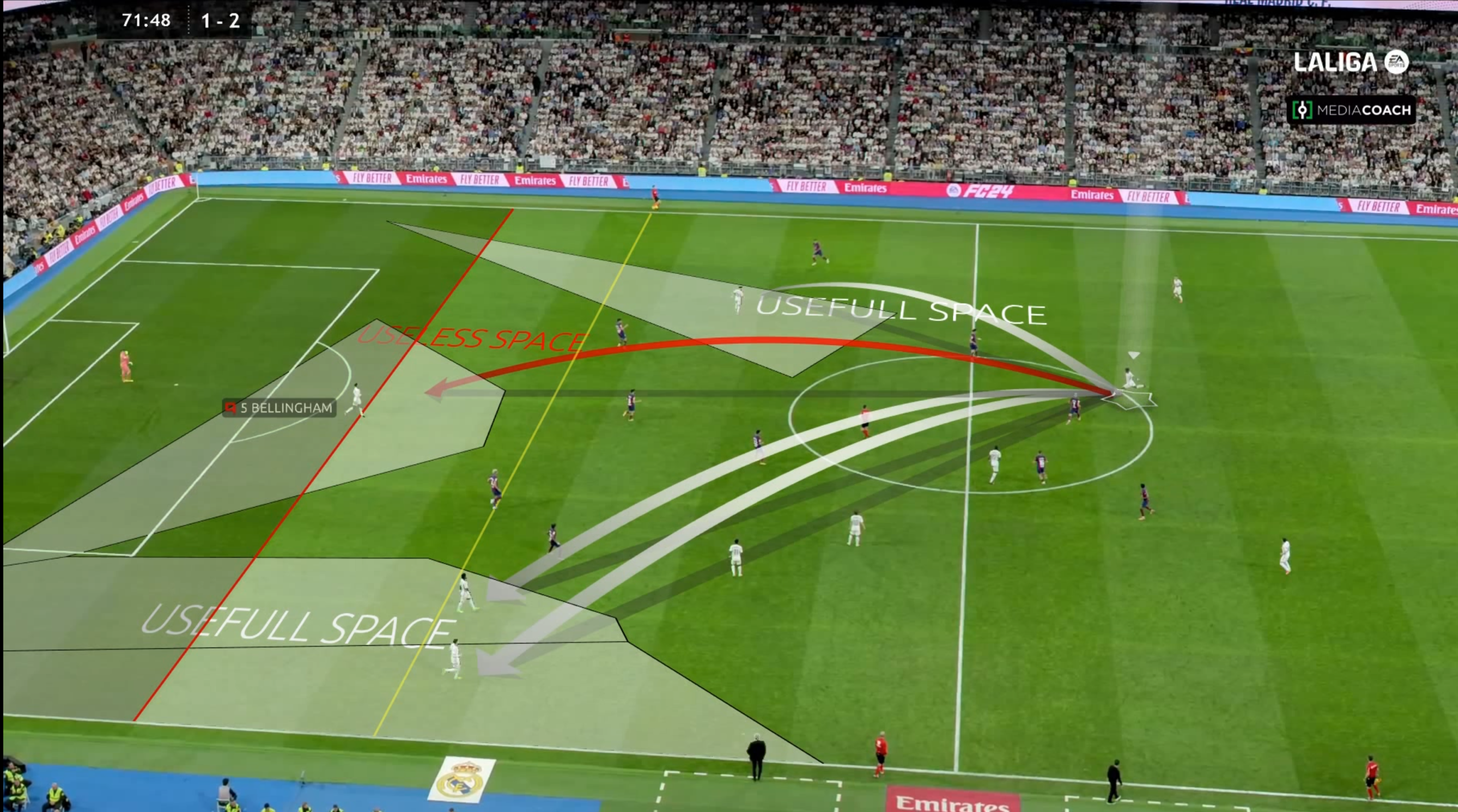
05 Sep The Future of Football Tactics: How Advanced Spatial Analysis Is Redefining Tactical Intelligence
In football, every second, every movement, and every decision made on the pitch can determine the outcome of a match. As the sport evolves, so too does the technology that allows teams to gain a competitive edge. The introduction of advanced spatial analysis in football is a game-changer, not only for understanding player movements but also for optimizing tactical decisions. This blog delves into the cutting-edge model that integrates space detection, offside awareness, and player intelligence—transforming how we analyze and train football teams.
A New Era: From Voronoi Diagrams to Tactical Intelligence
Traditional methods of analyzing player movement, such as Voronoi diagrams, have long been used to understand how players control and utilize space on the field. However, these methods come with significant limitations. Voronoi diagrams assume uniform player speed and acceleration, and they don’t account for dynamic factors like offside positioning. Recognizing these shortcomings, a new model has emerged that combines spatial analysis with real-time player attributes, fundamentally altering the way football tactics are studied and applied.
The new model enhances the classic Voronoi approach by incorporating two key elements:
- Player Speed and Acceleration: The model adjusts Voronoi areas based on individual players’ maximum speed and acceleration. Faster players naturally control larger areas, making the analysis more reflective of in-game reality.
- Offside Detection: Spaces are evaluated not just for their utility but also for their validity, considering the offside rule. This allows for a more accurate assessment of player positioning in offensive strategies.
The Importance of Detecting Useful Space
One of the core advancements in this model is the ability to distinguish between useful and non-useful space in real-time. In a typical game situation, a player might find themselves in what seems like a good position to receive a pass—until a defender’s movement renders that space non-useful, or even puts the player in an offside position. The model can automatically detect these moments and assess whether a player is positioned to maximize their team’s advantage.
This dynamic calculation, performed frame by frame, takes into account:
- Player intelligence in positioning: Evaluating whether a player remains in a useful space or frequently drifts into offside positions.
- Pass execution intelligence: Analyzing whether the player executing the pass chooses a teammate in a useful space or mistakenly opts for one in an offside position.
- Defender influence: The movements of defenders are tracked to understand how they convert useful spaces into non-useful ones by pushing attackers offside.
Frame-by-Frame Analysis: The Power of Precision
Football is often described as a game of inches and split seconds. This advanced model leverages frame-by-frame analysis to capture those critical moments when space transitions from useful to non-useful. In the accompanying video (linked in the post), these transitions are clearly illustrated, showing how just a few milliseconds can drastically change the outcome of a pass.
The introduction of Video Assistant Referee (VAR) technology has already demonstrated how minute details can affect key decisions in football, particularly in goals and offsides. The precision of this advanced spatial model takes that concept a step further by enabling teams to assess these details automatically and in real-time. This level of insight is invaluable for both tactical analysis and player development.
Practical Applications for Coaches and Teams
For coaches, the implications of this new model are profound. The ability to assess not only player performance but also tactical intelligence is a massive leap forward. With this model, coaches can:
- Improve decision-making: Train players to recognize and exploit useful spaces while avoiding unnecessary risks like offside positioning.
- Refine tactical awareness: Use the model to design training drills that improve spatial awareness, making players more effective both on and off the ball.
- Analyze opponents: Study how opposing teams utilize space and make defensive movements to inform match strategies.
In short, this model provides the tools for a more nuanced and informed approach to football tactics.
Real-World Impact: What the Data Shows
The model has already been tested with significant results. By incorporating player speed, offside awareness, and frame-by-frame analysis, teams can now quantify a player’s tactical intelligence more accurately than ever before. For example, data shows that some players remain in offside positions for extended periods during passing sequences, negatively impacting their team’s offensive flow. Conversely, highly intelligent players continuously adjust their position to stay in useful spaces, making themselves better targets for their teammates.
Additionally, defenders’ ability to disrupt useful spaces is now measurable. Teams can evaluate the effectiveness of their defensive strategies by analyzing how often they push attackers into non-useful spaces, forcing turnovers or limiting goal-scoring opportunities.
Conclusion: The Future of Football Tactics
The integration of advanced spatial analysis into football is more than just a technological evolution—it’s a tactical revolution. This model allows for deeper, more precise insights into how space is created, occupied, and defended on the field. By understanding both the physical and tactical intelligence of players, teams can optimize their strategies and make smarter, faster decisions that will ultimately lead to greater success on the pitch.
As football continues to embrace technological advancements like VAR, it becomes increasingly important to also focus on developing player intelligence in real-time situations. This new model not only provides that opportunity but sets the foundation for the future of football analysis.


